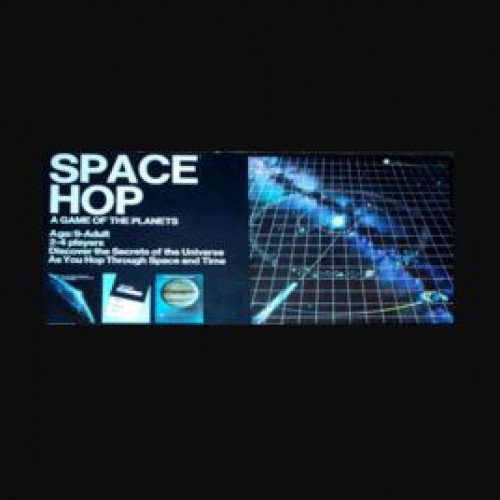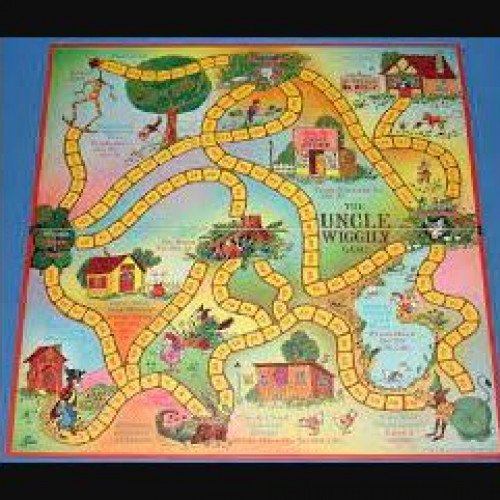"SPACE HOP" vs "UNCLE WIGGILY"

SPACE HOP
Space Hop is a board game for 2–4 players that is designed to teach the players about the solar system. Components The game has the following components: board (map of the solar system) three decks of cards: mission, hop and SNC clue decoder wheel two six-sided dice Set-up Each player rolls the dice and starts their token on the space port corresponding to their roll. Each player draws a mission card which gives a clue as to the player's destination. Gameplay The active player draws a hop card. If the active player is sure about their destination, they can spend their turn moving towards it. If the player is not sure, they can use the decoder wheel to decode the name of their destination, but doing so will use up their entire turn. Movement The player can choose to navigate towards their destinatioon by using their accumulated hop cards to hop from portal to portal. Or they can roll the dice and move the indicated number of spaces, avoiding asteroids, comets, and other space ships. Once close to their destination, the player must roll the exact number needed in order to land. Getting credit Once at the destination, the player draws an SNC card (or two cards if their mission card had a star). These cards award the player with credits. The player then draws a new mission card, and play continues. Victory conditions The first player to amass 25 credits wins the game.
Statistics for this Xoptio

UNCLE WIGGILY
Uncle Wiggily Game is a track board game based on a character in a series of children's books by American writer Howard Roger Garis. The game is of the "racing" variety in the style of the European "Goose Game". Players advance along the track from Uncle Wiggily's Bungalow to Dr. Possum's House. There is no optimal strategy involved as play entirely rests upon a random drawing of the cards. The game was first published by Milton Bradley in 1916 and has seen several editions with minor modifications over the years. Uncle Wiggily remains one of the first and favorite games of childhood, and, with Candy Land, is considered a classic juvenile American board game. Howard R. Garis created the character "Uncle Wiggily Longears" for a children's book in 1910. The game based on the children's story was first introduced by the Milton Bradley Company in 1916. Milton Bradley modified the game in 1923, 1949, and 1955. In 1947, the game cost $.67. Parker Brothers obtained the rights to Uncle Wiggily in 1967. However, in 1989 both Milton Bradley Company and Parker Brothers reintroduced different versions of the same game. Hasbro now owns both the Parker Brothers and Milton Bradley rights. The game is currently published by Winning Moves Games USA. The number of spaces on the track, the number of decks of cards, and the number of cards have all fluctuated through the years with the various editions published. The game board has been illustrated several times. The counters have been produced in both painted wood and colored plastic figurines of Uncle Wiggily. The board game in the 1950s had six painted metal (probably zinc) counters.